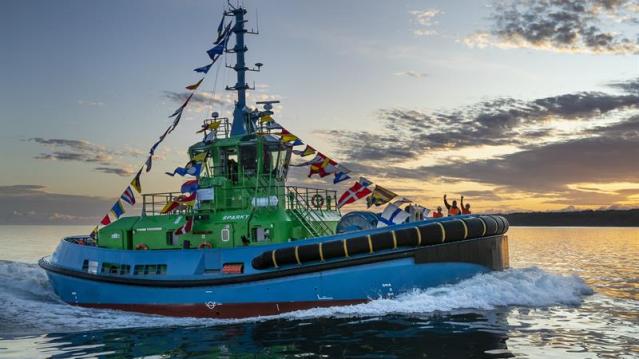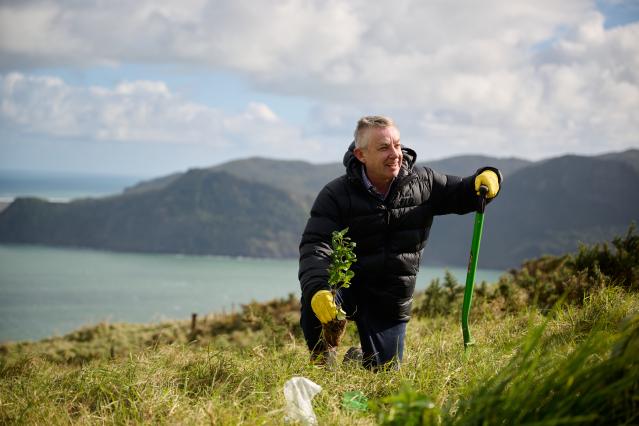As a vital hub in the heart of the city, we're committed to balancing growth with environmental stewardship, aiming for zero waste by 2040 and zero emissions by 2050.
Below is an outline of the environmental management and sustainability initiatives we are currently involved in.
Day-to-day environmental protection and improvement
We aim to meet and exceed all regulatory requirements and to continuously improve the natural environment that we are all part of.
To do this, we maintain a comprehensive, Environmental Management System (EMS). Our EMS sets out our policy and the procedures and practices to manage:
- site activities and discharges to air, land and water.
- important border controls such as biosecurity, hazardous substances, dangerous goods cargo management.
- awareness and training requirements of staff and port users.
To help improve the management of our operations and to be able to confirm compliance as necessary, we also undertake a range of inspections, audits and monitoring. Our EMS is externally certified under the Toitu EnviroMark certification system to their top Diamond certification level.
Reducing emissions
Our aim is to continue connecting New Zealand to global markets while reducing our carbon footprint. To meet our 2050 zero emissions target, we need to continuously improve the efficiency of our operations and replace our existing equipment at the end of its economic life with zero emissions equivalents.
We have already started this journey and have reduced our total direct emissions (Scope 1 and 2) by 23% from our 2017 baseline and recently commissioned Sparky, the world’s first full-sized electric ship handling tugboat. We have also just ordered New Zealand’s first electric empty stacker with assistance from EECA.
To ensure we are able to independently verify these reductions, POAL has been certified under Toitū’s CarbonReduce certification program since 2017.

Supply chain emissions
We are proud to help our customers optimise their operations and to reduce emissions through each step in the supply chain. Our Carbon Calculator allows customers to calculate emissions from the transportation of their container cargo on road and rail across the North Island. Click here to use our carbon calculator.
We've also been working to increase the use of rail and our freight hubs to sustainably link New Zealand exporters to global markets and importers to their distribution centres.
A resilient port - adapting to a changing climate
As 100% owned by Council, we are required to carefully consider how climate related risks and opportunities will impact our port in the short, medium and long-term. So far we’ve undertaken a comprehensive assessment of our climate related risks and opportunities and are in the process of developing a long-term transition plan to reposition the business in response to these changing risks and opportunities.
On-site renewable energy generation – solar power
To improve our resilience and to take advantage of the reducing costs of solar power generation, we have started generating our own renewable power on site. First off is the solar panels on the roof of the Bledisloe Car Handling Facility. When complete in 2025, this will generate about 6% or our current electricity demand here at the port. Our port has the potential to generate around 20% of its current power use on site.
Restoration project at Āwhitu Peninsula
We are partnering with Ngāti Te Ata, to replant approximately 30ha in natives at Te Mahanihani on the southern head of the Āwhitu Peninsula. Overtime this will increase biodiversity in the area, adding to a wildlife corridor over time, to create a beautiful area that can be accessed by the public and to create educational areas for schools and public to visit – and what’s more, according to Roger our CEO, “it’s just the right thing to do”.

Improving the health of our harbour
We are undertaking a multi-year project that aims to improve the marine biodiversity of the lower Waitematā Harbour and inner Hauraki Gulf with the aim of helping to naturally restore the historic shellfish beds of the inner Hauraki Gulf. This project plan sets three distinct stages. A secondary benefit will also include beneficially reusing our dredge material for creating marine reefs.
The objectives of each stage include:
- Stage 1: to progressively increase the marine biodiversity within the port and provide material to transplant in subsequent project stages.
- Stage 2: to restore and enhance the natural reef habitats in Mechanics Bay.
- Stage 3: extend hard reef establishment to suitable areas in the Rangitoto channel in conjunction with capital dredging campaign.
Solid waste – recycling and minimisation
We need to reduce our emissions by 5% each year to reach our target of zero waste to landfill by 2040. Currently we can divert and repurpose or reduce 17 different waste streams at the port. Even so around 30% of what we throw away in the red bins could have been recycled on site so we need to improve our waste segregation. To meet our target we also need to move up the hierarchy and look to see how we can stop waste being generated in the first place.